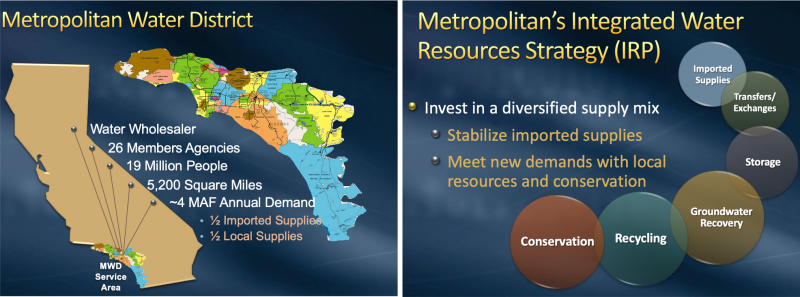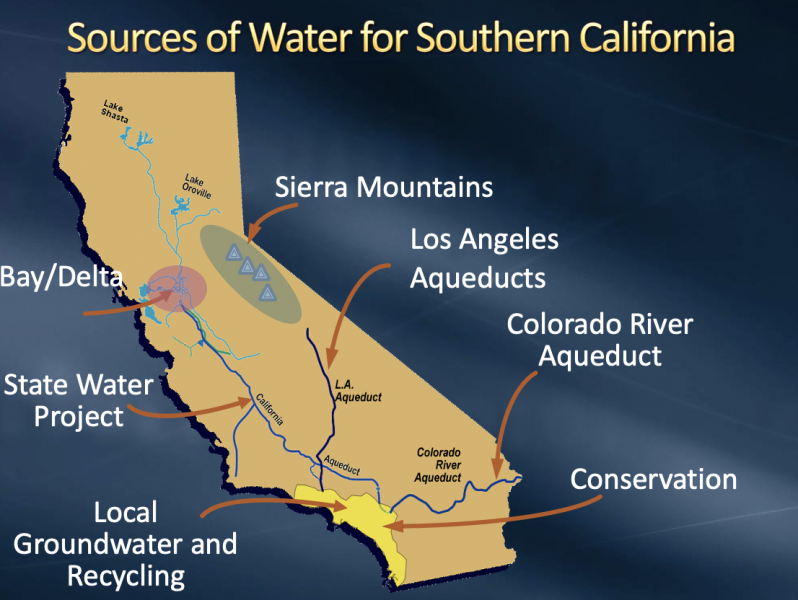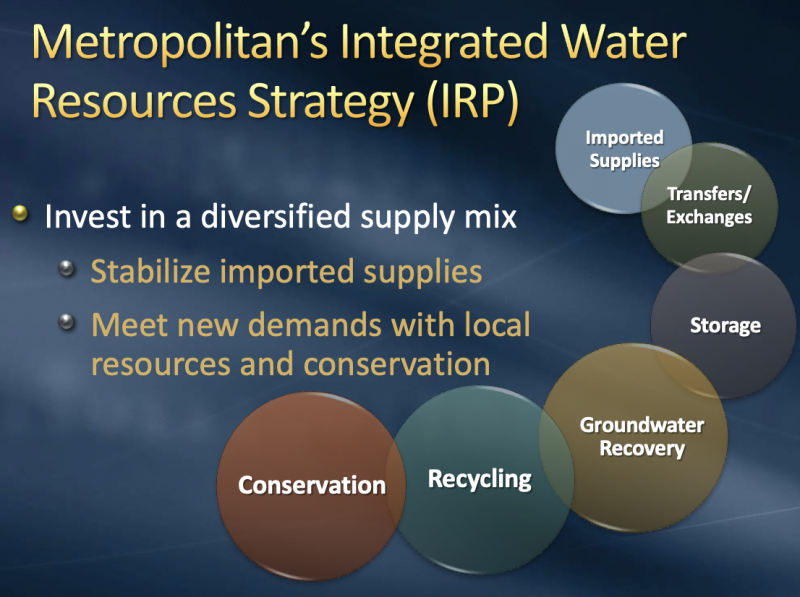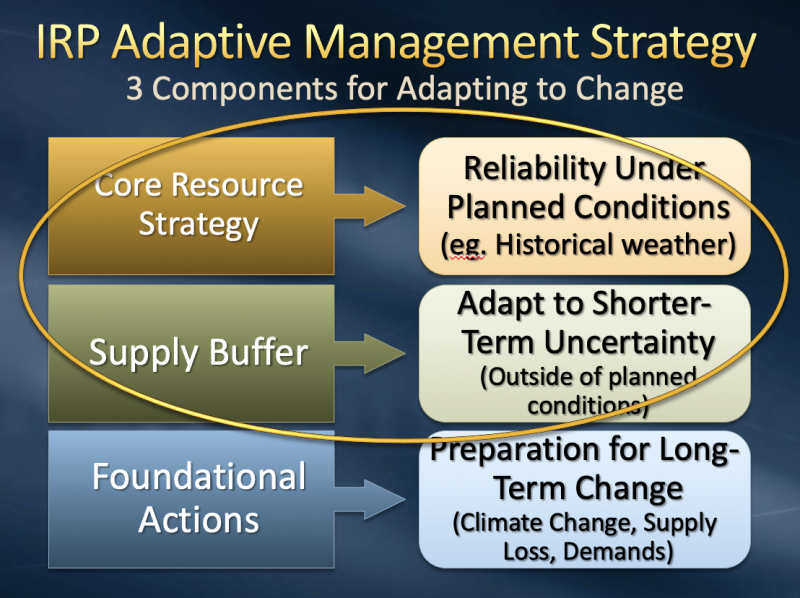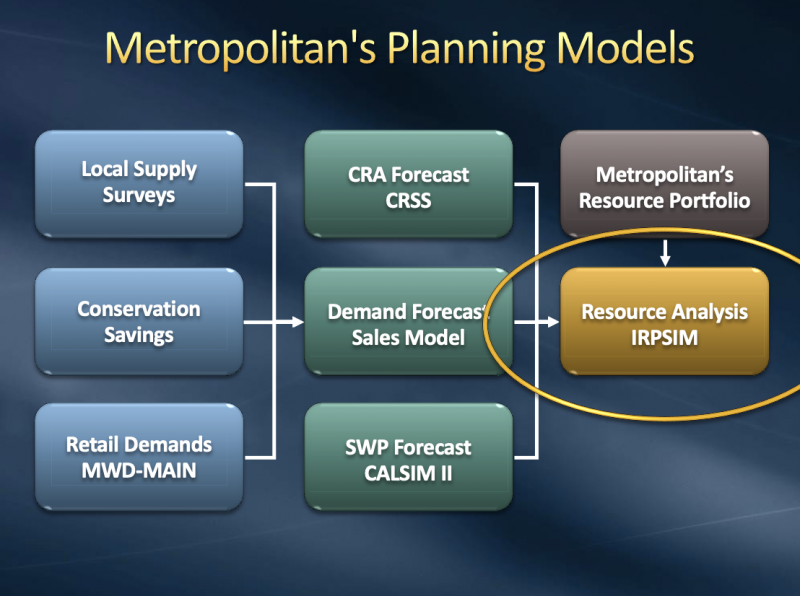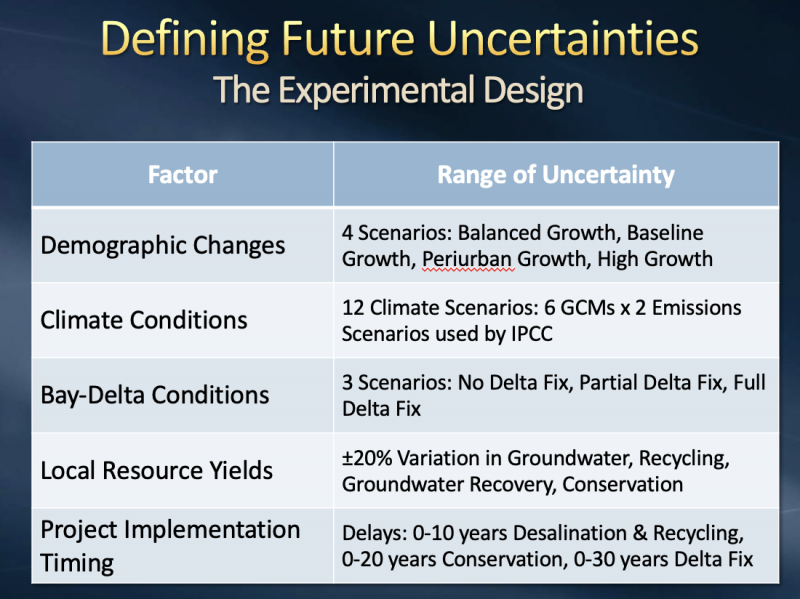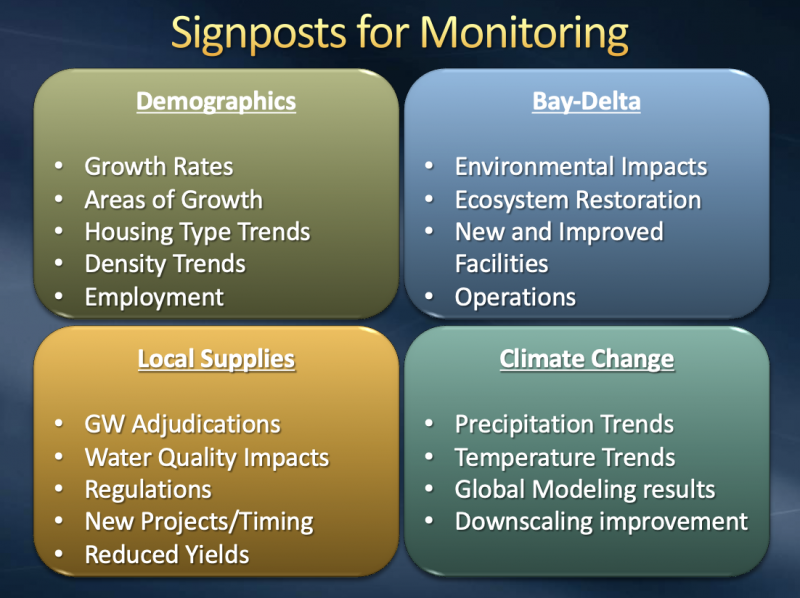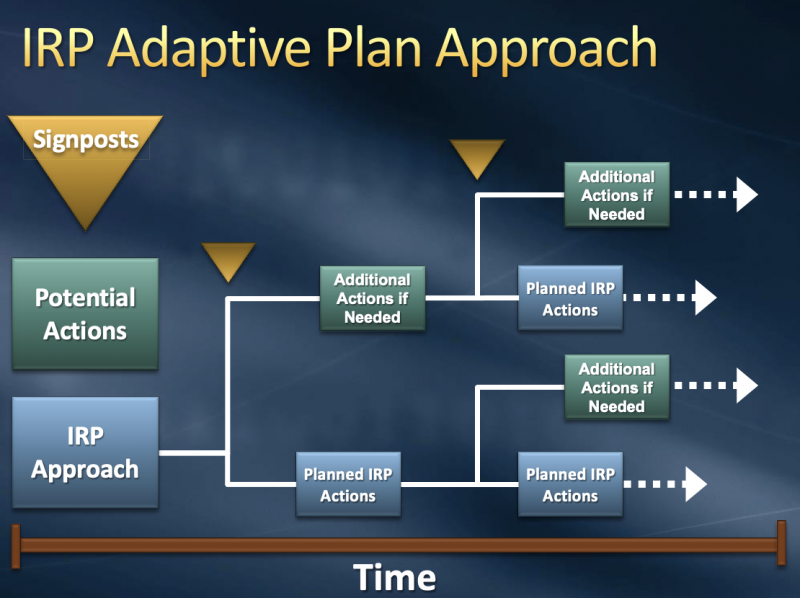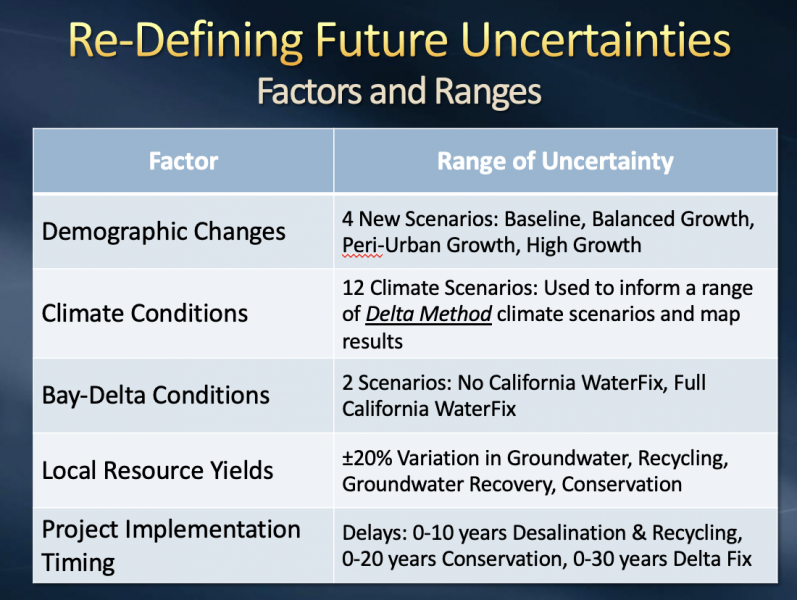Sections
The Metropolitan Water District of Southern California (MWD) is a water wholesaler, not a retailer. The MWD covers six counties in southern California, spanning over 5200 square miles, and imports water into the southern California area because southern California does not have enough of its own locally-supplied water for the needs of the people. (See figures below.)
The MWD is represented by the yellow area in the figure below. Where does the water come from? The portfolio includes local water with small surface diversions, recycling, water from the Sierra Mountains and the Colorado River, and local groundwater. The latter makes up a significant part of the overall portfolio, approximately 1.2 million acre-feet (1 acre-foot is about 326,000 gallons.)
The MWD developed an Integrated Water Resources Strategy (or Integrated Resources Plan, IRP) in 1996 and included stakeholder involvement in the work. A major outcome of the IRP was recognizing the MWD could invest in a diversified supply mix (next figure). This mix could include imported water, buying water on a voluntary basis, transfers, or exchanges from other entities. It could involve building either surface or groundwater storage, manage groundwater recovery, or even to clean up contaminated water and use some of that supply, recycling, or conservation.
"There are known knowns; there are things we know we know. We also know there are known unknowns; that is to say we know there are some things we do not know. But there are also unknown unknowns – the ones we don't know we don't know."
~Donald Rumsfeld
Some “known knowns” for MWD include:
- Official demographic projections can be determined on economic growth, population size, and other variables.
- Project parameters of the supplies we have are relatively known knowns. We know when they will go online and their capacity and yields.
- We can compare historical weather outcomes as a possible sample of current weather patterns.
- There are others.
Some “known unknowns” for MWD include:
- Existing projects may experience loss and/or yield reductions due to regulatory, internal, or environmental reasons.
- There may be changes in project parameters.
- There may be regulatory changes in the way that water quality constituents may be.
- There may be shifts in demographics and growth away from whatever the official parameters may have been.
- There may be economic boom and bust cycles away from the original projection.
- There are known unknowns around climate change and what it may look like in terms of impacts.
Some “unknown unknowns” for MWD:
- Noone knows what these are, because that’s the whole point of unknown unknowns!
It is important to be sure to do this work in a way that is understandable and accessible to all involved audiences, and make sure what you do is practicable to ensure that it is implementable.
In 2010 the MWD adopted an Integrated Resources Plan (IRP), in conjunction with an adaptive management component, to incorporate the practical or practicable aspects of what could come out of an RDM analysis. The figure below outlines the three categories of change in the IRP. The third, Foundation Actions, includes those potential resources to invest in to prepare for long-term change, but many of them aren’t quite ready for primetime, such as large-scale ocean desalination.
To explore future needs, MWD uses a resource calculator called IRPSIM. Under varying weather conditions over time, program in the operational rules and resources and it can provide answers regarding if there will be a shortage or surplus, how much storage was used, and other information. IRPSIM uses 30 supply sources and programs, 10 demand categories, 20 storage and transfer programs, 1000+ supporting variables, and 24 operational stages, which are rules for how the simulation works. IRPSIM gives us 50 years of supply and demand simulation and over 83 hydrologic traces, or outcomes in total.
In summary, IRPSIM runs on: 50 Years x 83 Traces x 1000 Variables x 24 Stages ≈ 100 Million Calculations
The simulation takes about 8 seconds per run.
To do RDM, or intensive scenario planning, we use the following inputs and framework. The IRPSIM resource uses a process called scenario discovery and is illustrated in the following two figures.
The RDM Analytical Approach analyzed over 6,900 combinations of uncertainty. We used “scenario discovery” to identify where the IRP Resource Mix failed with net balance and total storage. Using statistical methods, we determined common areas of vulnerability.
The analytical steps include:
- Configuring IRPSIM with “Core Resources Strategy and Buffer” of the IRP
- Evaluating “Core Resources Strategy and Buffer” with Experimental Design
- Identifying when the IRP fails based on specified markers/thresholds
- Identifying factors that led to failure
- Developing “signposts” for monitoring data associated with uncertainty factors
Summary of RDM Conclusions:
- The IRP approach is vulnerable when two or more uncertainties turn out unfavorably (next figure).
- Example: High inland growth combined with an increasingly hot/dry climate
- Key uncertainties to “signpost” and monitor include future delta conditions, demographic trends, groundwater yields, and climate conditions.
Over time, we’re going to be looking at the different signposts that define potential actions that may be developed through the foundational actions mentioned above, and the IRP basic approach (next figure). This is basically saying that over time I will implement the IRP actions. At certain points in time, I can look at the signposts which have been shortened by the foundational actions aspect of the adaptive management plan. If signposts indicate I should take a different track than what the basic IRP plan is, I can add those additional actions or make modifications.
Recently, we went through a new rendition, seen in the figure below. Here, you’ll see the Delta Method was used instead of the 12 scenarios for climate conditions. This is an example of taking action on vulnerability, rather than waiting for a new model. This created a new way for us to look at climate information.
